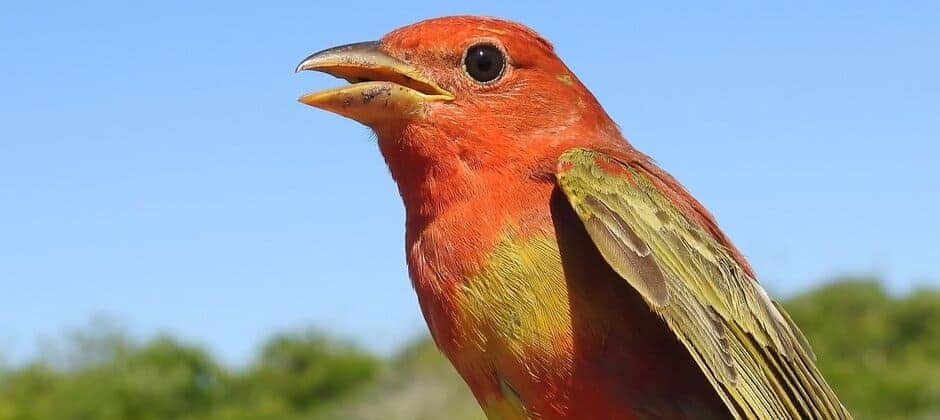Share this article
Research on human impact on Appalachian songbirds earns student award
As climate and land use changes take place throughout the Appalachians, researchers are watching how different species will react. Hannah Clipp, a PhD candidate at the West Virginia Cooperative Fish and Wildlife Research Unit at West Virginia University, took a particular interest in how forest songbirds would react to these changes across the range.
Some Appalachian songbird species are found only in cooler, higher latitudes. Others are associated with warmer temperatures in the southern end of the chain. Some generalists can be found throughout the range. Clipp wondered if a changing climate and shifting land use patterns would affect different songbirds in different ways.
She presented her research, “Potential Broad-Scale Effects of Future Climate and Land Cover Change on Forest Songbird Distributions in the Appalachian Mountains,” at The Wildlife Society’s 2022 Annual Conference in Spokane, Washington, and earned the Best Student Oral Presentation award.
The honor “came as a total shock,” Clipp said. “I was definitely very delighted by it and a tiny bit bewildered.”
Going into her research, Clipp had a lot of historic data on songbird species in the Monongahela National Forest in West Virginia from her advisor. But she wanted to expand the study to cover the entire Appalachian Mountains.
Focusing on 14 songbird species, she compiled data from 1997 to 2017 from the North American Breeding Bird Survey and paired the information with public climate and land cover datasets from the same period. While this information could tell her a lot about effects of climate change and land use historically, she was also interested in how birds would be affected in the future. Combining the historic data with models projecting changes into the future, she hoped to see how birds would be affected by 2100.
Her findings surprised her. She expected climate to be more important for bird abundance, but she found land cover was a bigger factor. Since the research was done on a broad scale, it may be a different story at individual sites, Clipp said, but because the Appalachians are heavily forested, songbirds have plenty of microclimates they can take advantage of.
“Effects of rising temperatures may not be felt as much under the forest canopy,” she said.
Land use change seemed to have the biggest effect in more urbanized areas, she found, like in parts of the southern Appalachians. “One of the warm-adapted species you would think would be doing fine if the climate warms—the summer tanager —was actually doing worse there,” she said.
The findings can offer some guidance to conservationists, Clipp said. While urbanization is difficult to stem, conservation efforts can focus on important areas for songbirds at risk. “You can look at different forest quality or forest habitat attributes and say, ‘Hey, there’s really high species richness in this forest, or there are interior birds that need mature forests, and fragmentation would be bad for those birds,” she said. “You can prioritize those habitat patches.”
Header Image:
Warm-adapted songbirds in the Appalachians, like summer tanagers (
Piranga rubra), may be at less risk from climate change than other birds, but urbanization is impacting them. Credit: Hannah Clipp








